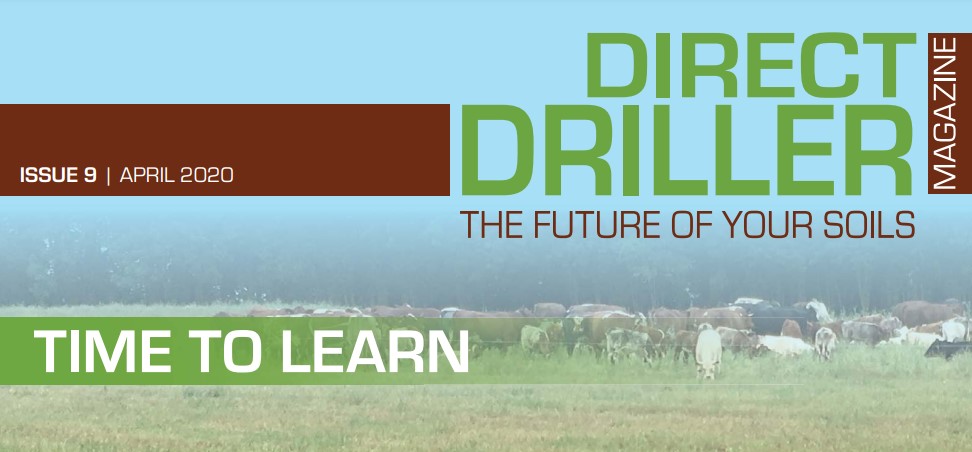No-till farmers are increasingly seeing grass as a useful arable break crop. The mat of grass roots created by No-till provides a fertile top layer of soil for the cash crop, which also benefits from the deep rooting pasture species. Grass builds soil structure and fertility, and also provides a useful income. Hence our cover picture which is used to underline the benefits and relevance of grass to the arable farmer. It also illustrates the increasingly wide knowledge base needed by farmers.
The post Brexit challenges will be immense and will require a change in the management system on many farms. Using an unchanged system will, in many cases, not be sufficient to keep the farm profitable, and it’s knowledge that’s needed to instigate change. Organisations including AHDB, Defra, Innovative Farmers, Innovation for Agriculture, LEAF, Farm Carbon Cutting Toolkit all have a stake in agri knowledge transfer (KT), as do events like Cereals, Groundswell and the agricultural shows and others, some which have sadly been cancelled this year.
KT also has a role in the universities and colleges, institutes such as NIAB, Rothamsted and many others. To a greater or lesser extent all these involve the application of scientists and the scientific method to farming problems. Direct Driller magazine, along with The Farming Forum online, is providing further reach for this knowledge, and knowledge transfer is very much the topic of the day. Our aim with Direct Driller is to bridge the gap between research organisations and farmers, providing readers with a glimpse into the future, be that making changes in time for the next harvest, or looking at methods and technology which will be used by the next generation of farmers.
The truly excellent Nuffield report on KT by Mark Bowyer published Oct 2015 exposes the major difficulties of KT in UK farming. He highlights the chasm which still exists between research and application and the need for this to be bridged in both directions. He also comments on the large number of organisations involved in R+D, each with their own means of communicating with farmers, and the ( s o m e t i m e s ) poor coordination between them.


